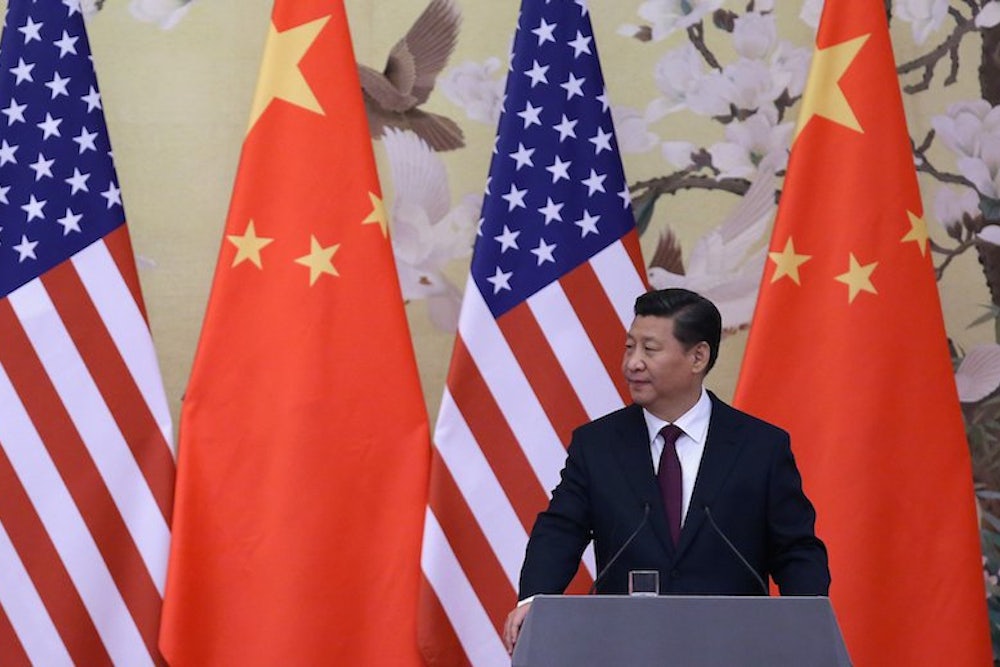In December, 196 countries signed an agreement in Lima, Peru, promising to pledge what they can to cut greenhouse gas pollution. For many, it was the first time they've ever made that promise. To keep these countries on track, the climate change conference agreed that as many nations as possible would submit their proposals before March 31.
Most of the world is about to blow past the deadline. Countries representing two-thirds of the world's emissions, in fact, haven't offered their pollution reduction targets yet. But in the end it's unlikely to matter, because the punctual countries are setting marks the rest of the world will be obliged to follow all the way to the climate talks in Paris at the end of 2015.
The on-time countries include Norway, Switzerland, the 28 members of the European Union, and Mexico, the first developing nation to submit a plan. Importantly, Mexico has agreed to 2026 as the year its greenhouse gas emissions will begin to decline. The United States is expected to join the list Tuesday. The White House will formalize President Barack Obama's announcement of last fall that pledged the United States by 2025 will cut between 26 and 28 percent of its 2005 greenhouse gas levels. The announcement will also add detail on how, exactly, the government plans to achieve this.
That leaves the world waiting on some major dawdlers, including China and Russia. Several, particularly Canada and Australia, are dithering because their leaders are reluctant to participate in a Paris accord. India, for one, is less concerned with reducing pollution than it is with expanding electricity access (India likely won't announce its contribution until June.).
The commitment from all 196 countries to make national pledges is exactly what makes the world’s twenty-first United Nations climate change conference unprecedented. Each country will propose what they can commit to, based on their interests and political reality, no matter their level of economic development. The next eight months give experts and negotiators enough time to scrutinize the plans and pressure nations for more aggressive promises.
In theory, if most countries delayed their pledges for another few months, it could hurt the odds that a strong accord comes together by the climate change conference in Paris at the end of 2015. Bangladesh, which is on the frontline of climate change, warned what this delay could do. “It will be very difficult to assess them all if they come late,” Bangladesh’s top climate negotiator Quamrul Chowdhury said, according to Bloomberg. “We risk the treaty.”
But in practice, the slow rollout of submissions shouldn't make much of a difference and may in fact drive the world toward a stronger accord.
Realistically, once governments publicly commit to a plan, they've gone as far as they intend to go in carbon reductions. International pressure won't force the biggest polluters to reconsider. What matters more than the timing of the pledges is their strength, which has generally surpassed expectations. The definition of a strong pledge varies by country: For developing nations, it means identifying a target date emissions peak, and for developed nations, it should build on their existing 2020 goals by cutting pollution further. And having these announcements arrive one by one, over a span of many months, might even raise the stakes of Paris, because dawdlers may try to top the contributions of the earliest filers.
“They’re probably getting more actual concrete upward pressure by having countries roll out their targets the first time,” said Peter Ogden, a former Obama administration climate official and senior fellow at the Center for American Progress. “They come in sequence and countries before them are setting the bar.” Ogden argues it is better that countries aim high the first time around, even if it means taking their time to file. It was always unlikely that they would reconsider a new plan at a later date.
The largest emitters seem to be settling on a compromise over the deadline by giving a vague indication of what they plan early on and leaving enough room to raise their ambitions later. “An ideal option in-between the two would be that countries very early in the process announce relatively vague targets that leave room for changing ambition in a negotiation phase during 2015,” said Niklas Höhne, founding partner of the New Climate Institute, a German group helping to track pledges.
We've seen a trickle of announcements, including Obama's, that do exactly this. The European Union put forward “at least” a 40 percent cut and China loosely chose 2030 for carbon pollution to come down. Once the Paris accord puts these ambitions to paper, countries ought to promise to meet the aggressive end of these ranges. Yet there's some risk to this approach. Couldn't the stragglers sit out and reap the environmental benefits of other countries bringing down emissions? This is where international diplomacy plays a key role; e.g., using trade and clean energy finance to ensure the hundred-plus countries remain committed. The final accord will allow countries to hold one another accountable while remaining flexible enough for major polluters to support. (The Kyoto Protocol of 1997 broke down when the United States, among others, saw it as too rigid.)
By June, the New Climate Institute estimates that submitted pledges will cover 75 percent of global emissions. That should leave enough time before Paris for us to realize the world still won't be on track to limit climate change to an agreed-upon limit of 2 degrees Celsius.
